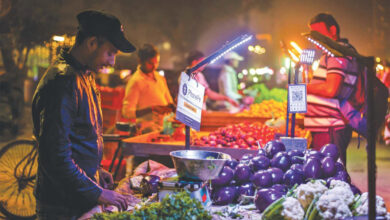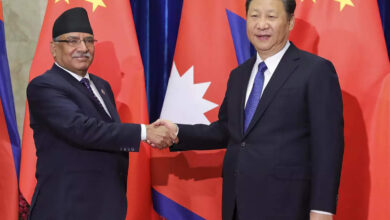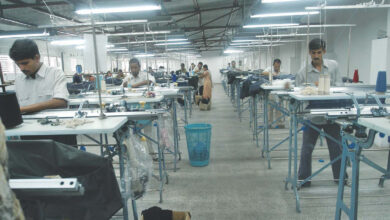Nepalis hit by rising prices every which way
As if costlier food was not enough, the government has been finding new ways to tax its inflation-stricken citizens.

By Krishana Prasain
Kathmandu: While a series of measures by India to tighten food exports has pushed up local prices, the government is making life harder for Nepalis by increasing taxes on food, say analysts.
After India ordered a ban on exports of non-basmati rice on July 20, the price of rice shot up by Rs200 to Rs400 per 20-kg bag. Coming just ahead of the autumn festival season, it is a big blow to Nepali consumers.
India issued the embargo in response to rising food prices, high inflation and fear of rice shortages due to El Nino disruptions as the country heads into the festive season and elections.
Nepalis had barely recovered from the shock when India slapped a 40 percent export duty on onion on August 19. The spicy bulb suddenly became scarce in domestic markets.
Onion is indispensable to South Asian cooking, and India is the world’s largest exporter. According to insiders, the customs duty is intended to stem exports to neighbouring countries and cool inflation in vegetable products.
India’s neighbours will have to live with higher prices of onions because of the steep export duty till December 31.

And on Friday, India imposed a 20 percent export duty on parboiled rice with immediate effect. Experts say the move could further reduce shipments by the world’s largest exporter and lift global rice prices, which are already close to 12-year highs.
India extended a ban on wheat exports after curbing rice shipments in September 2022. The southern neighbour has also capped sugar exports this year as cane yields dropped.
As if costlier food from India was not enough, the Nepal government has been finding new ways to tax its inflation-stricken citizens.
No value-added tax can be levied on potatoes, onions and other daily consumable farm products as per the Value Added Tax Act of 1996. But that was a minor hurdle for the government which promptly amended the law through the Financial Bill 2023, and removed 170 goods from the tax-free list.
So the new fiscal year began with 13 percent VAT on vegetables and other food items on top of the 9 percent agriculture service charge and 1.5 percent advance tax for a total of 23.5 percent in taxes.
The Financial Bill has imposed 13 percent VAT on imported onions, potatoes, garlic, peas, frozen green leafy vegetables, collard greens, beans, spinach, sweet corn and other green vegetables.
“The government’s tax policy shows that Nepal is not a welfare state,” said Nara Bahadur Thapa, former executive director of Nepal Rastra Bank.
“If consumer interests were a top priority, no taxes would be imposed on food items. This is a totally wrong strategy.”
Thapa said that inflation was already high in Nepal, and the new taxes would cause an inflationary burst this year.
The central bank’s statistics show that the annual average consumer price inflation stood at 7.74 percent in the last fiscal year 2022-23 ended mid-July, compared to 6.32 percent in the previous fiscal year.
Under the food and beverage category, the annual average consumer price index of the restaurant and hotel sub-category increased by 14.42 percent, spices by 12.50 percent, cereal grains and their products by 10.70 percent and milk products and eggs by 9.23 percent.
The figures show that food inflation is already above the double-digit figure, and a further rise may impact millions of Nepalis who spend more than 80 percent of their income on consumption, mostly food.
Even as food prices are soaring out of control, the government has announced its aim to keep inflation within 6.5 percent this fiscal year.
“It has been two to three years since the price of goods has been increasing continuously. This has made it difficult for us to survive,” said Siddhi Gorkhali, who works in a corporate office.
“My salary has not increased in the last several years, but the price of a 25-kg bag of rice has jumped by more than Rs500 within a year.”
Gorkhali said that since his monthly income was not enough for his growing expenses, he has had to dip into his savings which he has deposited for future use.
In the markets, the prices are rising fast, and they are unstoppable.
Pearl brand rice, which used to cost Rs2,150 per 25-kg bag in July, rose to Rs2,451 after India’s ban on rice exports.
Lentils (mushuro) now cost Rs170 per kg, up from Rs150 last month.
The price of jeera has reached Rs1,400 to Rs1,500 from Rs450-500 per kg five months ago.
The wholesale price of tomato increased by 36.31 percent to Rs54 per kg in the last three months, according to the Kalimati Fruit and Vegetable Market.
“As the list of measures used to calculate inflation is long, the price index does not necessarily reflect the actual inflation that a consumer feels,” said economist Gobinda Nepal.
The government said in its budget statement presented on May 29 that inflation was gradually moderating, but it remains above the desired limit. Price rises in food, dairy products, household consumer goods, imported goods and the depreciation of the Nepali currency against the United States dollar have put pressure on consumer prices.
“Our challenge is to contain inflation and maintain macroeconomic stability,” the budget statement said.
According to economists, no proper studies have been done to examine how inflation has spiralled, particularly after the budget added taxes to food items and India started imposing export taxes one after another to protect its food reserves and control inflation.
A high export duty allows India to curb exports which means surplus availability of food at home.
“While India has adopted a protectionist market policy, in Nepal, the market is open,” said economist Nepal. “The Nepal government has no clue about what prices should be charged on which items. The market has been given a free hand.”
For example, while the price of tomato reached a record IRs300 per kg in India, the Indian government decided to import tomatoes from Nepal to bring down prices. It also relaxed quarantine provisions to allow tomatoes to flood into the Indian market.
In Nepal, prices soared by 200 percent after traders started exporting tomatoes in large quantities to India.
“Vegetables have started being exported to India, and this will also increase inflation due to short supply in the domestic market leading to higher prices,” said Nepal. “Traders will sell where they get better profits.”
India is largely concerned about rising inflation, given the steps it has been taking for the last couple of years, but the Nepal government is least bothered about the people’s well-being.
“The government needs to be clear about its objective. It should be clear about its economic and market policies,” Thapa said.
Inflation hits the lowest-income families harder because items such as food make up a much larger portion of their budgets, leaving less for spending on health and education.
Krishana Prasain is a business reporter for The Kathmandu Post covering markets. Before joining The Kathmandu Post in 2018, she spent 3 years in New Business Age magazine covering business.




